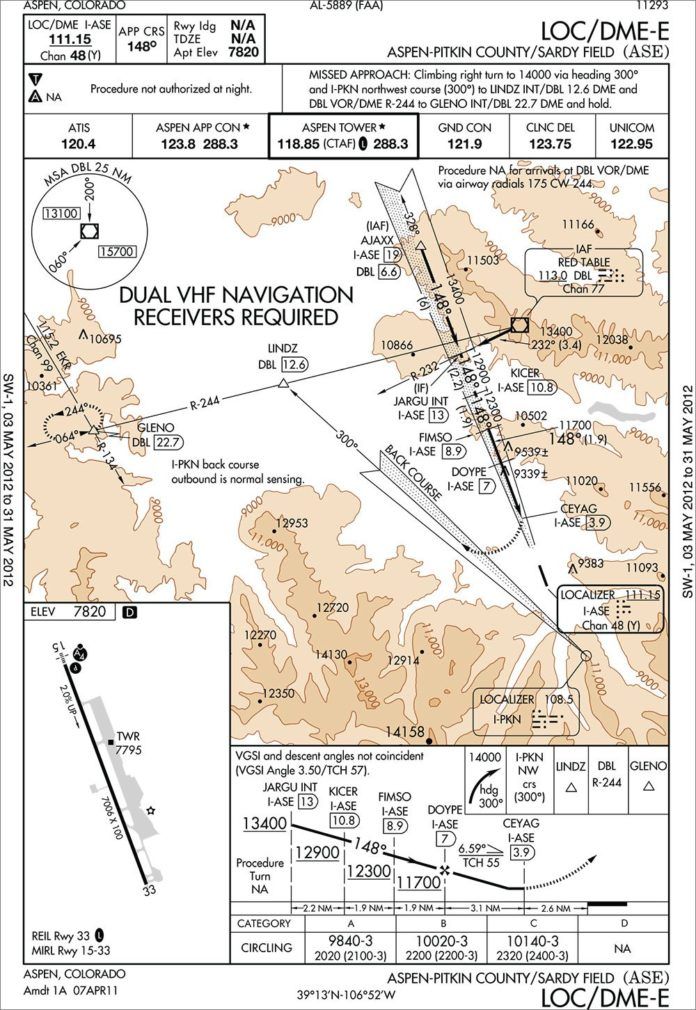Recently during an approach to an uncontrolled airport, I asked the Approach controller for a telephone number I could use to contact Approach directly if necessary after landing to cancel the IFR clearance.
It was a tight approach and so I used the number on my cell phone to cancel while taxiing to the ramp, and in the process asked if I could use the same number to get a clearance when I was ready to leave in an hour or two. The unexpectedly enthusiastic reply was, “Yes, of course, please do.” The call for clearance worked beautifully.
As a result, I did some research to find out how available these numbers are so that I could get people like ForeFlight and FltPlan.com to publish them so that we both (controllers and pilots) could use the efficiency of cellphone technology to better communicate in the fashion above than we’ve been used to with Flight Service. I’m thinking specifically about the uncertainty one experiences, especially with void time clearances. I discovered that the numbers are not published for pilots to use, so I wrote a letter requesting that they be published. That letter appears to be a wave on its way aimlessly out to sea.
Then your May 2012 issue touched on the subject in the article “Where Is Our FS21?” and so here I am in the hope you would agree with me and give me some new routing for my request. I’m looking for the organization that could publish TRACON numbers.
Would you please let me know what you think about this, and suggest some routing if you agree?
John Lindsay
Fort Wayne, Ind.
We contacted both NATCA and the FAA. NATCA says they won’t publish phone numbers to an FAA facility, but have no objection to the FAA doing so. The FAA has yet to get back to us on this.
Just Love That Flight Service
Sometimes it seems people just have to look for problems. That was the impression I came away with after reading your July 2012 article on Flight Service.
I am the chief instructor at a busy 141 flight school. I have been flying for over 40 years. I get a briefing from Lockheed Martin every single day of the week. There is no question that the service they provide is light years ahead of what the government workers used to do. It is very rare these days to not have my call answered on the first ring. Almost all the time the briefer has good local knowledge. Just last week, I had a briefer call me back (using Caller ID) when she discovered that she had missed informing me of a particular NOTAM. Try getting that kind of service from Walmart.
I’m not sure why you have such an ax to grind with them. If a survey from AOPA finds that 75 percent are using it and satisfied, why do you need to find a way to explain the other 25 percent? You say that those users aren’t long-haul flyers. I fly coast-to-coast several times a year and rely on Flight Service to help with my knowledge of those flights. Sure they aren’t the only source I use, but it’s nice to have someone who is knowledgeable with whom I can have a good discussion of a flight.
You end your article with, “Given how previous promises have been slow in coming … we’re not bubbling in anticipation.” That just goes to show your lack of objectivity in the whole analysis. Why not knock that chip off your shoulder and acknowledge what most pilots already know—that Flight Service is not perfect but is a good service for the money.
Ken Maples
Cupertino, Calif.
The Other Left
I thought my memory had finally gone when I first read your article describing the old-time CDIs as having “the blue on the right side” and the “yellow on the left.”
In fact, this Pelican recalls just the opposite. The VOR/LOC radio itself would show blue on the left and yellow on the right. Thus, when the pilot drifted right of course more into the blue side of the LOC as depicted on the approach plate, the needle would swing into the blue to tell him to turn left to reintercept the LOC course, providing true sensing.
Think this was a slip of the pen (or word processor). Of course, I could be mistaken, in which case I shall apply to Sporty’s for a brain replacement. I remember the blue/yellow alignment so clearly because we had a local charter pilot named Byron. The first two letters of his name matched blue-yellow. I can also remember the first time I flew into Aspen (1976) in a Lear 24D. Glad I never had to miss.
Jim Denike
Newtown, Conn.
We’re the ones who needs the brain-check, Jim. We were looking at the approach plate when we wrote that left-right, but as you point out, the shading on the plate and the shading on the CDI head are opposite each other. That way the needle drifts into the side (blue or yellow) where the pilot is, not where the pilot wants to go.
Radar Contact Clarified
As usual, I read the June 2012 IFR “Approach Clinic” by Jeff Van West closely, as it frequently contains life-saving pearls. In it he commented that if the pilot was in radar contact with ATC, then they are taking responsibility for terrain clearance.
I wish that was uniformly true, but it occasionally feels like Ashville, N.C., would find collateral damage acceptable if it made Atlanta happy and kept traffic far away from KATL. In the past I have been repeatedly vectored directly toward mountains that rise over 4000 feet above the airport in about 11 miles. Based on the climb performance of my single-
engine plane, that places me right on level with the tops of the ridge (and worse on hot days and downright dangerous on windy days downwind of the Blue Ridge Mountains).
Repeatedly, my requests for a more southerly, safer loop around these mountains have been denied for expediency sake. I would have to accept the route, and then, while I was climbing “in the soup” out of Ashville, ask Departure whether I was going to make the mountain. There would be a pause, and finally they would vector me towards my originally requested initial fix.
I then discovered Obstacle Departures! For some reason, these were not emphasized during my instrument course. This is my ace. Ashville can’t deny me my southeastern climb to a safe altitude. They still demand that I fly straight over a remote, wooded wilderness without any hope of survival if I lost power, but at least I won’t hit the mountain ridge on my climb!
Jane Catterton
Chattanooga, Tenn.
Jane, you’re absolutely correct about “Radar Contact.” Some overzealous editing for space corrupted two sentences into one. “Radar Contact” does not mean ATC has taking responsibility for your terrain and obstacle clearance. However, a vector assigned by ATC does mean they are taking responsibility for terrain and obstacle clearance.
This is what makes the second part of your letter disturbing. If ATC is vectoring you into the mountains, something is wrong. However, if the heading was a result of your clearance routing, that could be the issue. And, yes, ODPs are too often overlooked and just the ticket to ensure there isn’t an unfortunate meeting of metal and scenic vistas.
VOR? Isn’t That an 80s Band?
Several of you had sharp eyes and pointed out that the Nav1 VOR in our July Killer Quiz was not tuned to the Montpellior VOR so it would be ready for the missed approach.
While that’s true, it’s also not necessary, as the GPS would provide guidance on the missed. With a WAAS GPS like the Garmin GTN 750, a VOR isn’t even required to be installed, let alone ready for use. You could still dial it in as a potential backup, of course.
Got sumptin’ you want to say? Send it our way at
[email protected].





